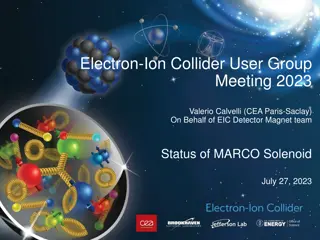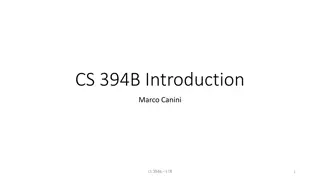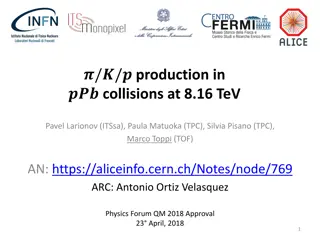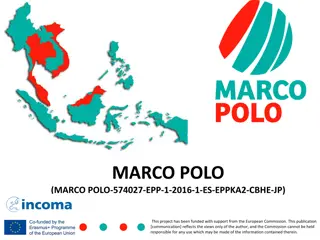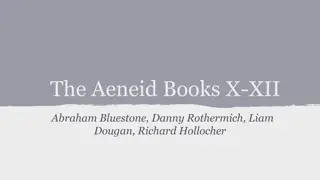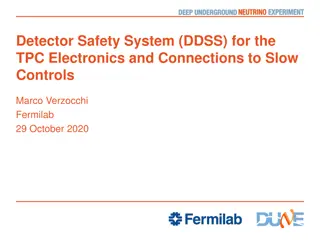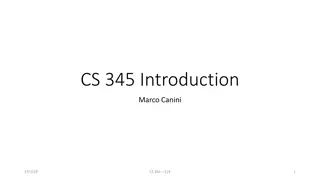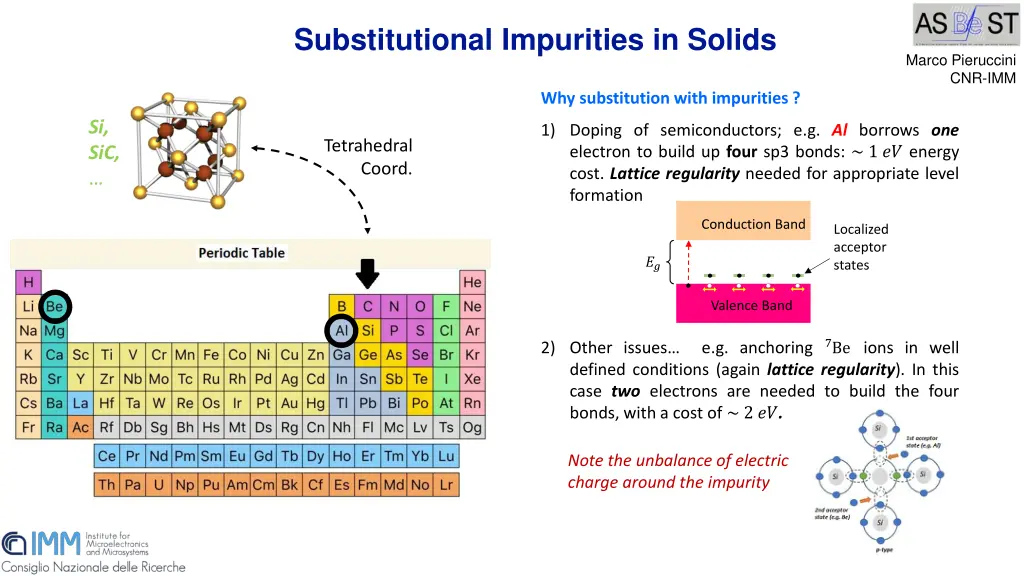
Understanding Substitutional Impurities in Solids
Explore the role of substitutional impurities in solids for various applications like doping of semiconductors and ion implantation. Learn about the thermodynamics of viscous liquids and the mean-field specific pseudo-potential for exploring metastable states in implanted solids.
Download Presentation

Please find below an Image/Link to download the presentation.
The content on the website is provided AS IS for your information and personal use only. It may not be sold, licensed, or shared on other websites without obtaining consent from the author. If you encounter any issues during the download, it is possible that the publisher has removed the file from their server.
You are allowed to download the files provided on this website for personal or commercial use, subject to the condition that they are used lawfully. All files are the property of their respective owners.
The content on the website is provided AS IS for your information and personal use only. It may not be sold, licensed, or shared on other websites without obtaining consent from the author.
E N D
Presentation Transcript
Substitutional Impurities in Solids Marco Pieruccini CNR-IMM Why substitution with impurities ? Si, SiC, 1) Doping of semiconductors; e.g. Al borrows one electron to build up four sp3 bonds: ~ 1 ?? energy cost. Lattice regularity needed for appropriate level formation Tetrahedral Coord. Conduction Band Localized acceptor states ?? Valence Band 7Be ions in well 2) Other issues defined conditions (again lattice regularity). In this case two electrons are needed to build the four bonds, with a cost of ~ 2 ??. e.g. anchoring Note the unbalance of electric charge around the impurity
Ion Implantation in solids Marco Pieruccini CNR-IMM Main Features 1. Controlling: Profile Localization Dose 2. Implantation produces a metastable locally disordered material: an extremely viscous liquid which would tend to approach the thermodynamically more stable crystalline state 3. Lattice damage Beneficial:enhances the probability of substitution (e.g. dangling bonds) Drawback: need to recover crystal regularity (possible with low damage); this can be done through Implanted Si on Si a) Control of implantation conditions b) Post-implantation annealing ~ 1.5 ?? Si
Thermodynamics of a Viscous Liquid Marco Pieruccini CNR-IMM Heat Bath A system in contact with a Heat Bath consists of two interpenetrating subsystems: one made of FAST d.o.f. (short wavelengths) and the other consisting of the SLOW diffusive d.o.f. (long characteristic lengths). SLOW diffusive d.o.f. The subsystems are not physically distinct in the sense that in a given set of units whatsoever the d.o.f. are partitioned between the fast and slow classes. FAST deg. of freedom WORK Ideal equilibrium is described by the red ?(?) line. Viscosity onset is accompanied by a reduction of the mean configurational entropy ???. This regime is parametrized by the mean fluctuation ?????: Entropy equilibrium liquid ??? Quenching of SLOW modes: viscosity WORK = ? ????? ????? ??? Total Energy
The mean-field specific pseudo-Potential for a Viscous Liquid (from a general minimization of the overall free energy) Marco Pieruccini CNR-IMM Without a sufficient energy gain the variety of metastable states cannot be explored ?? Random probing metastable states Energy ??= ?? ???ln?? ? ? ? ?? ??= ???? + ? ?? ??? ???? Configurations ( time arrow ) Cooling towards ??one has ???? 0, that is Entropy ? ? ??? ??? ? ????? If a unit succeeds crossing a barrier ? to rearrange, then this energy redistributes among ? other units in the form of configurational entropy. Energy 6
Escape from Metastable States in implanted solids Marco Pieruccini CNR-IMM A defect made of ? atoms in a semiconductor just implanted is in a metastable state and in regime of strong confinement: Need of high-? post-implantation annealing to reduce the theoretical threshold ? ? or wait for an energy supply (fluctuation) ? ? ??? ? = ?(? ????) ? can t be reached and the disordered spot keeps frozen. and Recover Crystal Regularity Lattice disorder is related to configurational entropy. Evolution towards thermodynamic stability (regular crystal lattice) implies a decrease of ??in time (relaxation time approximation + cooperativity): Faster process ?? ?2?? ?? ??? ??= ?0 ?ion ? ?? ???? ?ion ?? ???.+ ?ion time Finite number of attempts ??for damage recovery/substitution
Substitutional fraction ? vs. Implantation/post-impl.-Annealing Marco Pieruccini CNR-IMM ? = ??? ~ ? ? /?????? 1) All attempts for substitution (??) occurred during implantation or annealing: ~1 ?? for Al in 4H-SiC, consistent with the density saturation value, for which ????= ? ? ?? = 0 entropy recovery ? ~ ????? { ?+ ??}/?????? 2) Few attempts for substitution occurred during implantation or annealing: ?? 3 ?? suggests Al-substitutions in damaged sites (in regular ones it would be much higher) 1. ????= ?? ??? 2. High implantation damage high probability of substitution (fast processes) difficult lattice recovery on annealing small ??(due fast kinetics) 0.58 eV 3. Compromise is needed; relevance of implantation conditions For??? in 4H-SiC ( ? 2 ??): need of high-? implantation due to limits in ???? 4. ????= ? ???
Marco Pieruccini CNR-IMM END
Marco Pieruccini CNR-IMM Fluctuations in the slow d.o.f. subsystem are correlated with fluctuations in the fast d.o.f. ??? ????? ? ???? ?/??? ??,0 ?????= ???ln In an ensemble of ? independent oscillators, for which ??,0= ? ???? ?/???, the fluctuations able to trigger a structural transition are those of sufficient energy ? ?. Alternative picture: cutoff of LONG-wavelength, LOW-energy modes. ? increases on cooling because this way the density of states increases as well, which enhances the probability that the physical group of units attracts energy from the heat bath. When the amplitude of the oscillations grows enough, then a structural change takes place.



